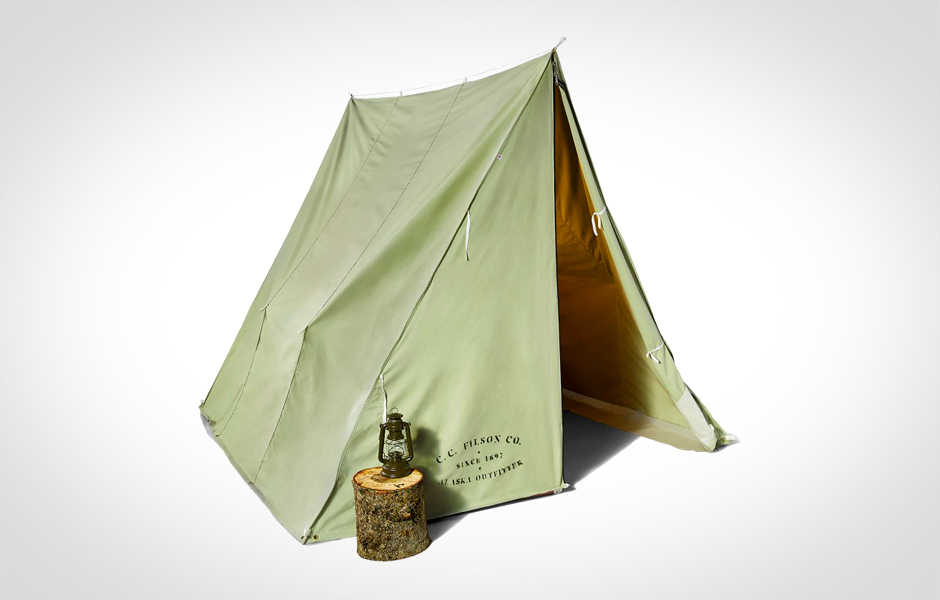Man isn’t meant to stay indoors — our weekly “Trekking” column can attest to that. It’s a column dedicated to the adventurer inside of all of us, the one pining to ditch the office humdrum for a quick surf session or seven-week jaunt in the Grand Tetons. One day we may highlight an ultra-light stove and the next a set of handmade canoe paddles. Life doesn’t just happen inside the workplace, so get outside and live it.
Filson has always had a knack for the outdoors, every since the Seattle-based manufacturer first began selling outdoor wears to prospective gold miners on their way up to the Klondike. The company is still at it more than a century later, though it’s now just as concerned with make leather-trimmed luggage and woman’s apparel as it is heavy-duty jackets and baselayers. Nonetheless, the Filson Wedge Tent ($1,000) is a suitable homage to the old-school camping tents of yesteryear — or maybe just a sweet, military-grade mockup that’s poised to become your child’s favorite getaway.

Check out Filson online to make a purchase, or to simply browse the company’s robust selection of outdoor equipment and apparel.






